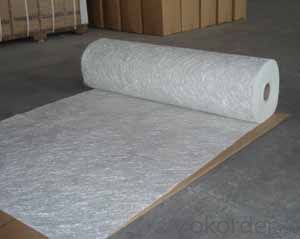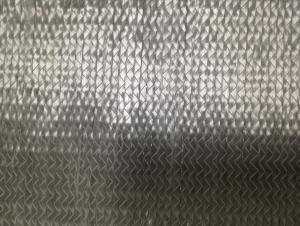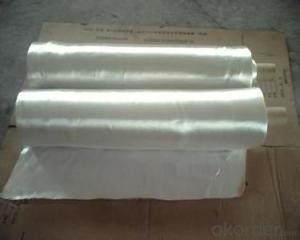Silicone Coated Fiberglass Fabric - Fiberglass Supplies/Fiberglass Reinforced Polymer
- Loading Port:
- Tianjin
- Payment Terms:
- TT OR LC
- Min Order Qty:
- 100 m.t.
- Supply Capability:
- 20000 m.t./month
OKorder Service Pledge
OKorder Financial Service
You Might Also Like
Quick Details
| Place of Origin: | Hebei, China (Mainland) | Brand Name: | Yuniu | Model Number: | thermoplastic Chopped Strands |
| Application: | thermoplastic | Surface Treatment: | silane | Technique: | chopping |
| Length: | 3-22mm | Quality: | Perfect | Certificate: | ISO9001:2000 |
| Color: | White |
Packaging & Delivery
| Packaging Details: | bag, pallet |
| Delivery Detail: | 7 days after the payment |
Specifications
Glass fibre Chopped Strands for concrete are designed for reinforcing PP, PA,PET, PBT POM, PPS and PC
Glass fibre Chopped Strands mainly used in injection and compression molding processes and its typical end-use applications include automotive industry, home appliances, valves, pump housings, chemical corrosion resistance and sports apparatus.
Product Features
1.Good strand integrity, low static and good flowability;
2.Fast and uniform distribution in resins, good processing properties and good mechanical
properties of the end products;
3.Good bonding with resins. No fiber sticking out at the surface of the end products and aesthetic
appearance.
Technical parameters
Filament Diameter(%): ±10
Moisture Content(%): ≤0.10
Size Content(%): 0.75±0.20
Chop Length (mm): ±1.0
Chop ability(%): ≥98
Packaging
Glass fibre Chopped Strands can be packed in bulk bags, cardboard boxes or composite plastic woven bags;
Bulk bags can hold 500kg~1000kg each;
Cardboard boxes and composite plastic woven bags can hold 15kg~25kg each.
Storage
Unless otherwise specified, fiberglass products should be stored in a dry, cool and rain-proof area. It is recommended that the room temperature and humidity should be always maintained at 15-35,35%-65% respectively.
Picture




- Q: Can fiberglass fabric be used for architectural applications?
- Yes, fiberglass fabric can be used for architectural applications. Fiberglass fabric is a versatile material that offers several advantages for architectural projects. It is lightweight, flexible, and has high tensile strength, making it suitable for various applications such as roofing, cladding, and insulation. Fiberglass fabric is also resistant to fire, chemicals, and UV rays, making it durable and long-lasting. Additionally, fiberglass fabric can be easily molded into complex shapes, allowing architects to create unique designs and structures. Overall, fiberglass fabric is a popular choice in architectural applications due to its numerous benefits and adaptability.
- Q: Rural cement flat roof room, how to do waterproof, anti leakage best?
- The laying of the rigid waterproof layer, should be completed in the first flexible waterproof layer after two days of construction, mainly in high fatty acid waterproofing agent, cement mortar, sand, fine aggregate, fiber as basic material, waterproof layer thickness is 20-30 mm;(1) install the grid batten according to the specification, and set it to 4000 millimeters * 4000 millimeters. Then sprinkle water to make the base surface moist, but no water;According to (2), from far to near, from high to low order, the mortar prepared fine stone concrete or by grid construction, with a lattice a complete, smooth compaction;(3) after the initial setting, remove the partition bar, press and trim the partition joint;(4), using the flexible sealing material filling dividing joint, surface treatment. After completion of construction, pay attention to sprinkler maintenance;(5) if there is roof planting soil, it should be covered with planting soil in as short as possible time.
- Q: Can fiberglass fabric be used for making filters for air purifiers?
- Yes, fiberglass fabric can be used for making filters for air purifiers. Fiberglass fabric is known for its excellent filtration properties, making it an ideal material for capturing and trapping airborne particles such as dust, pollen, pet dander, and other allergens. It can effectively remove these contaminants from the air, improving indoor air quality and promoting a healthier living environment. Additionally, fiberglass fabric is durable and resistant to high temperatures, making it suitable for long-term use in air purifiers. However, it is important to note that fiberglass can release tiny particles when damaged or mishandled, which can be harmful if inhaled. Therefore, it is crucial to handle and maintain fiberglass filters with care to prevent any potential health risks.
- Q: Can fiberglass fabric be used for reinforcement in oil storage tanks?
- Fiberglass fabric, with its lightweight and robust nature, proves to be a viable option for reinforcing oil storage tanks. This material, known for its exceptional corrosion resistance and impressive tensile strength, not only enhances the structural integrity of the tanks but also helps avert any leakage or potential failure. Moreover, fiberglass fabric's non-reactive nature towards oil and other commonly stored chemicals further bolsters its suitability for this purpose. Ultimately, the utilization of fiberglass fabric in reinforcing oil storage tanks leads to heightened durability, safety, and longevity of these tanks.
- Q: Can fiberglass fabric be used for reinforcement in water treatment tanks?
- Yes, fiberglass fabric can be used for reinforcement in water treatment tanks. Fiberglass is a strong and durable material that is resistant to corrosion and chemicals, making it suitable for use in water treatment applications. It can provide structural reinforcement to the tanks, ensuring their stability and longevity. Additionally, fiberglass fabric is lightweight and easy to install, making it a cost-effective solution for reinforcing water treatment tanks.
- Q: Is fiberglass cloth antistatic?
- Fiberglass cloth itself is not static, also known as glass fiber glass fiber cloth geotextile, with tensile strength is very strong, the surface static electricity accumulation, no fouling dead angle, easy to clean
- Q: Can fiberglass fabric be used for insulation in oil and gas facilities?
- Indeed, insulation in oil and gas facilities can be achieved using fiberglass fabric. This material is widely employed for insulation purposes owing to its remarkable thermal properties, capacity to endure extreme temperatures, and resistance to harsh surroundings. Notably, it is non-flammable and effectively hampers heat transfer, rendering it ideal for insulating pipes, tanks, and equipment within oil and gas facilities. Furthermore, fiberglass fabric boasts the advantages of being lightweight, pliable, and effortless to install, thus making it a viable and pragmatic option for insulation in such facilities.
- Q: What's the price of fiberglass fabric penetrant?
- The company has strong technical ability, can help customers solve various formulations problems.
- Q: What's the best form of roof waterproof?
- If it is inclined roof, with chimney or straight vent, it is recommended that the chimney around to focus on waterproof treatment. In addition to the use of ordinary cement base, do not use aluminum foil like asphalt, suggested above neutral weatherproof sealant coating, it can keep a long time waterproof! Personal experience.
- Q: Is high strength fiberglass cloth the same as high silica fiberglass cloth?
- The high silica glass fiber cloth is one of the high strength fiber cloth, but it is also the most common and most common one.
Send your message to us
Silicone Coated Fiberglass Fabric - Fiberglass Supplies/Fiberglass Reinforced Polymer
- Loading Port:
- Tianjin
- Payment Terms:
- TT OR LC
- Min Order Qty:
- 100 m.t.
- Supply Capability:
- 20000 m.t./month
OKorder Service Pledge
OKorder Financial Service
Similar products
Hot products
Hot Searches
Related keywords


































